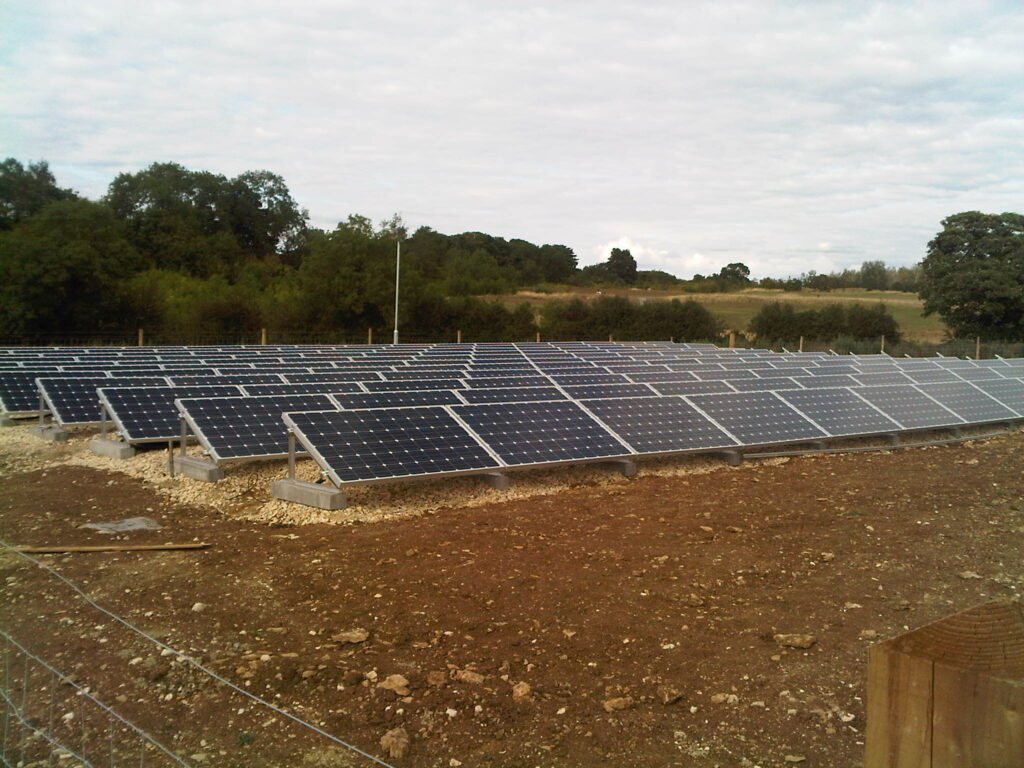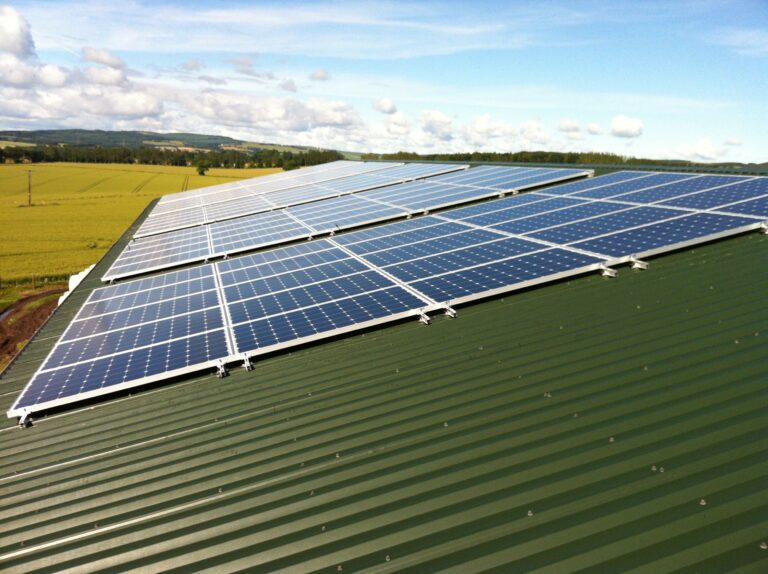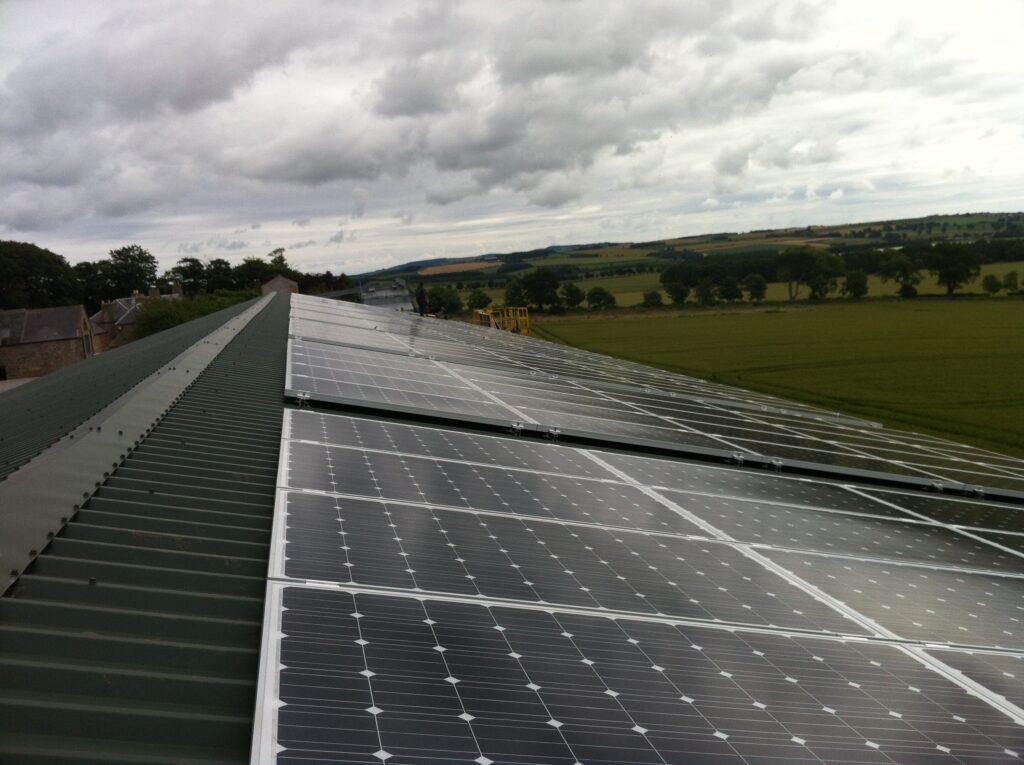Agricultural Solar Panels: Everything You Need to Know
As the push for renewable energy grows, farmers and landowners are increasingly considering agricultural solar panels power as a sustainable and profitable option. But many questions arise when exploring solar energy on agricultural land:
✅ Can I install solar panels on my farmland?
✅ Is it better to place them on buildings or the ground?
✅ What size should my solar farm be?
✅ Do I need planning permission?
In this guide, we’ll dive into the most frequently asked questions about solar panels on farmland, covering topics like the best type of solar panels for agricultural use, the typical lifespan of a solar farm, and the potential returns for those in the UK. Whether you’re looking to maximise your land’s productivity or reduce your farm’s energy costs, farm solar power offers exciting opportunities. Let’s explore the benefits and considerations of solar energy on agricultural land.

Can I Put Solar Panels on Farmland?
Yes, you can install solar panels on farmland, and it’s becoming a popular choice for farmers who want to diversify their income while embracing renewable energy. Agricultural solar panel installations are often referred to as “solar farms” or “agrivoltaics” (combining agriculture and photovoltaics).
Solar farms can be installed in ways that coexist with farming activities, such as using raised ground-mounted solar panels that allow grazing animals to pass underneath, spacing out panels to grow crops around them or using solar panels as fencing.
By harnessing solar energy, farmers can produce their electricity, reduce their carbon footprint, and generate an additional income stream by selling excess power back to the grid under the SEG or REGO Scheme. This setup can also provide economic stability in the face of unpredictable agricultural yields due to climate changes.
Is It Better to Put Solar Panels on Farm Buildings or the Ground?
Both solar panels on farm buildings and ground-mounted solar panels have their advantages.
Solar Panels on Farm Building Installations:
Placing solar panels on rooftops (barns, storage units, or cattle sheds) allows you to make use of unused space, often without disturbing your farming operations. It’s a great way to generate energy while preserving your land for agriculture. Solar panels on farm buildings typically avoid the need for additional land assessments and can be a more cost-effective option for smaller farms.
Ground-Mounted Installations
Ground-mounted solar panel systems are ideal for large, unused areas of land or land with low agricultural value. These mounted solar panel systems can accommodate significantly larger solar arrays than rooftop installations, allowing them to generate more power from optimised sunlight exposure.This is an excellent choice for larger farms that want to maximise energy output or establish a full-fledged solar farm. However, it requires more space and may necessitate a more involved planning process.

What Is the Best Size for an Agricultural Solar Panels Farm?
The size of a solar farm largely depends on the available land, the energy goals, and budget. Solar farms can vary greatly, from small installations that power a single farm to larger setups capable of powering thousands of homes.
Small Solar Farms
Typically, around 15 acres of land can accommodate around 4.5MW solar PV array, the system can generate up to 6.23GWH
✅A 1 MW solar farm system can supply enough power to meet the annual energy needs of a farm with approximately 600,000 kWh of usage dependent on parameters.
✅A 12 MW solar farm can power about 1,000 homes, ideal for a small community.
Medium Sized Solar Farms
An acre of land can support around 300 kW peak of PV solar capacity. For Land sizes between 5 and 25 acres, such solar farms can produce approximately 10.39 GWh of energy, making them suitable for larger commercial operations, multiple farms, or for exporting power to the national grid.
Large Solar Farms
Over 25 acres in size, largescale solar installations can generate tens to hundreds of Giga Watt Hours, feeding substantial amounts of electricity into the grid.
The best size for your agricultural solar panel farm will depend on the amount of land or roof space you have available, how much energy you want to generate, your financial considerations and your aspirations.

Do You Need Planning Permission for a Solar Farm?
Yes, planning permission is typically required to install a solar farm on agricultural land in the UK. It is treated similarly to other large-scale developments and requires consultation with local authorities.
To gain approval, applicants must demonstrate that the project won’t negatively impact the environment, surrounding landscape, or wildlife. Depending on local regulations, the planning process may be more straightforward for smaller installations intended solely for farm use.
To ensure a seamless experience, it’s recommended to collaborate with commercial solar developers who have expertise in navigating planning permissions for renewable energy projects.
What are the Key Components of a Solar Farm Application and feasibility process
General Scheme Design
A comprehensive layout plan that addresses energy production, site arrangement, and integration with the surrounding landscape.
Habitat Survey & Biodiversity Net Gain (BNG) Report
Essential for evaluating the impact on local ecosystems and ensuring a net gain in biodiversity.
Archaeological Desk-Based Analysis
An assessment to ensure that the development does not disrupt any significant archaeological sites or artifacts.
Surface Water Drainage Assessment
Critical for preventing flooding or waterlogging issues on and around the site.
Landscape Plan
A design to harmonise the solar farm with its surroundings, minimising visual impact and enhancing aesthetic integration.
Topographical Survey
Provides detailed site measurements and elevations to aid in planning and construction accuracy.
Landscape and Visual Assessment
Evaluates the visual impact on the surrounding area, crucial for gaining community and regulatory support.
Flood Risk Assessment
Ensures that the project will not contribute to flood risks, especially in vulnerable areas.
Additionally, environmental assessments and impact reports on local communities are often required to address concerns about the solar farm’s effects on the area. Conducting a topographic survey is also essential in the initial feasibility phase to inform the design and placement of the solar arrays accurately.
Which Solar Panel Is Best for Agriculture?
For agricultural use, the best solar farm panels are typically high-efficiency, durable models that can withstand adverse outdoor conditions for many years. Here are some factors to consider:
Durability
Agricultural land is often subject to exposure from weather, livestock, and machinery, so it’s important to select durable, reliable solar panels. These panels should be installed at a raised height to allow for livestock grazing and to ensure long-term performance in a rugged environment.
Bifacial Panels
Ideal for ground-mounted angled systems or solar fencing, these panels capture sunlight on both sides. This makes them perfect for farmland installations where light reflects off surfaces like snow or light-colored soil, maximising energy capture throughout the day.
Monocrystalline Panels
These are often recommended for their higher efficiency and longer lifespan compared to polycrystalline panels.
Brands like REC, LG, SunPower, and Trina Solar are popular choices for agricultural solar panel projects due to their high-performance, durability, and large wattage capacity, typically ranging from 500 to 750 watts per module. These robust products are well-suited for the demands of agricultural environments.
What Is the Lifespan of a Solar Farm?
The typical lifespan of a solar farm is around 25-30 years. Solar panels generally come with a 25-year performance warranty, ensuring they will continue to produce energy at 80-90% of their original capacity by the end of the warranty period. However, many agricultural solar panel farms continue to generate electricity beyond this timeframe, albeit with reduced efficiency.
Inverters and other components of the system may need to be replaced during this time, typically every 10-15 years, but overall, solar farms are a long-term investment with minimal ongoing maintenance.

What Are Typical Returns on a Solar Farm in the UK?
The returns on a solar farm in the UK can vary based on location, size of the farm, and government incentives like the Improving Farm Productivity Grant from the Farming Investment Fund, Contracts for Difference (CfD) or Feeding Tariffs (FIT). However, the latter has been phased out for new projects.
Generally, a well-planned solar farm can offer returns in the following ways:
Energy Savings
Using the electricity generated to power your own operations can greatly reduce energy costs. Additionally, you can earn income by harnessing excess energy to sell privately or by exporting it to the grid during peak times.
Income from Exporting Energy
Any surplus energy can be sold back to the grid. Depending on the scale of your solar PV system project, this can generate a steady revenue stream.
Government Incentives:
While Feeding Tariffs (FITs) are no longer available, the UK’s CfD scheme and the Farm Productivity Grant allow renewable energy projects to secure a stable income from selling energy.
Typical financial returns can range from 5–10% annually, depending on the farm’s efficiency and energy prices. Larger solar farms with optimised layouts and technology tend to yield higher returns. Additionally, farms can lease land to solar developers, providing a regular income with minimal investment in equipment.
Conclusion
Solar panels on farmland offer a fantastic opportunity to generate clean energy, diversify income, and contribute to environmental sustainability.
Whether you are looking to power your own farm, lease your land for a larger solar farm, or invest in solar for long-term returns, solar PV energy can be a smart and sustainable choice for farmers. Make sure to carefully consider the size, planning requirements, and type of panels you need, as well as the potential lifespan and financial returns of your project.

































